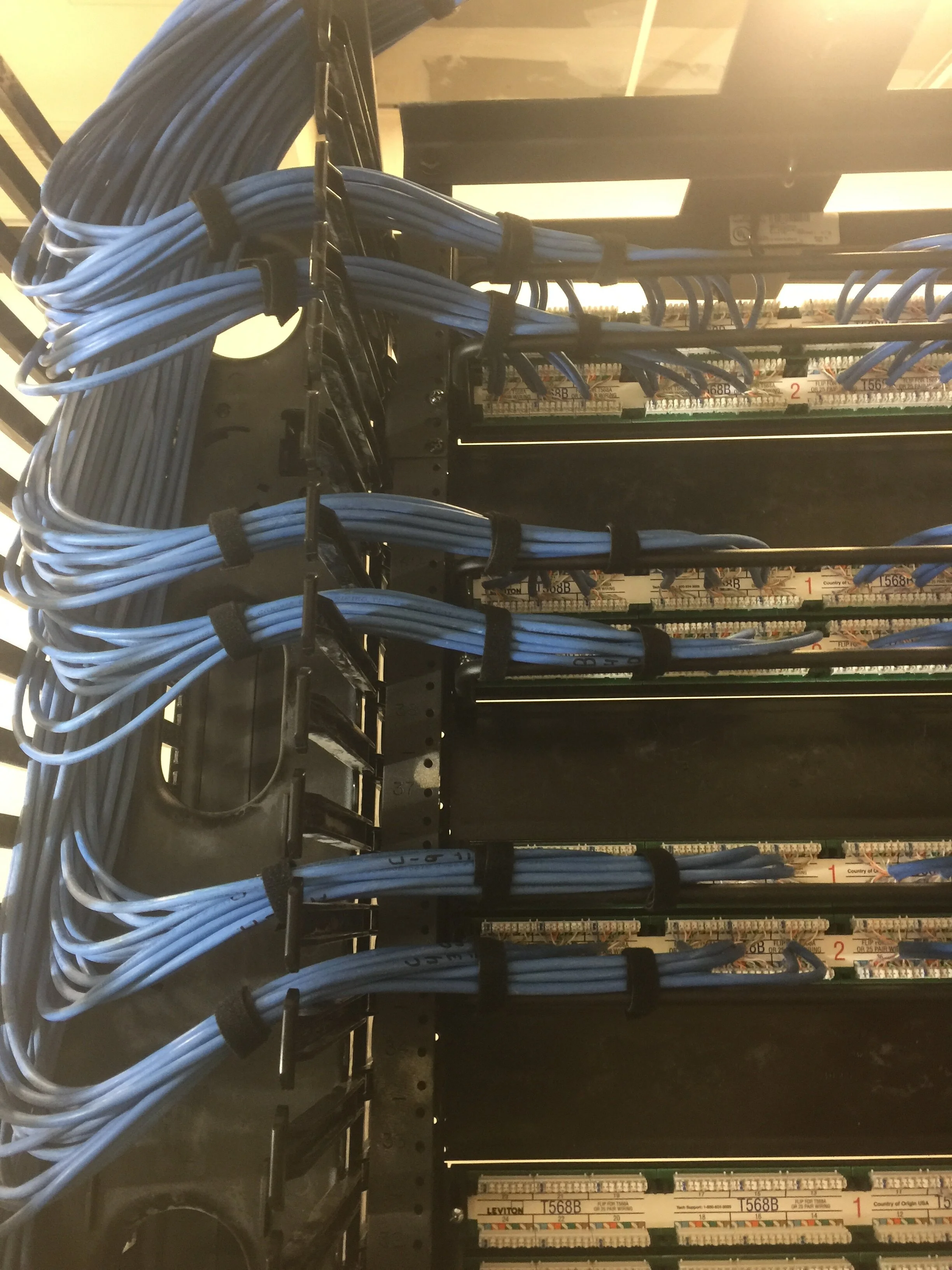When it comes to installing cable, one of the most important aspects to consider is cabling pathway. Ultimately, pathway from the MDF/IDF to the device’s final location is critical for proper installation. The routing of the cable is defined by the environment, accessibility, and the physical limitations for the cable to function correctly. What’s more is that cable pathway can come in many forms, including conduit, cable tray, and/or free air supports. Each pathway type has its own pros and cons; no matter which type, it is important to define a pathway that has the capability of supporting your cabling while separating it from other trade or scope’s cabling.
Issues To be Aware Of
Oftentimes, different systems involving varied cable types will originate from the MDF/IDF and travel the same basic pathway or route until they branch off to the final device location. In turn, installations will seek to share a common pathway—but this is not a good idea.
Why?
Because many issues can arise from this, including:
Not installing to NEH/AHJ code
Damage from other trade/scope’s cable installation
Conduit/cable tray/J-hook overfill
Heat dissipation
Harmonic coupling from induced magnetic fields
Damage from future adds/moves/changes/maintenance
Other Items of Importance
Here are some other noteworthy points to take into account:
NEC code requires separation of systems in pathways. This includes separating power and lighting from all other systems. Pathway, including penetrations, pull boxes, raceway, and free air pathway must be separate from any power or lighting pathway and associated raceways, pull boxes, or penetrations.
Sharing a pathway with other trades/scopes often results in one trade/scope having their cable damaged. Additionally, the cables will often have jacket burn or wear from the friction of other cables being pulled over the top of existing cables. Realize that excessive pulling at angles can cause internal copper wiring to be stretched and not function to the manufacturer’s specifications.
Another common issue is conduit, cable tray, pathway, and penetration overfill. Each conduit, cable tray, free air pathway, and penetration type is rated for a specific cable fill percentage, which is based on size, cable type, and heat dissipation. Overfill can cause physical damage to the cabling jacket, internal copper wire/strands, and possible raceway/conduit/cable tray/free air pathway.
Class 1, 2, 3 power limited circuits, DAS communication cabling, copper communications cabling, and other trades/scopes need to be separated due to harmonic coupling across cables from induced magnetic fields and for heat dissipation. Induced magnetic field coupling will cause “hum” or “noise” on the line, which interrupts packet transmission. In turn, this can cause loss of connectivity to devices, loss of audio and/or video, as well as packet drop from devices.
Finally, know that cables for different systems that are the same type will often be damaged or removed unintentionally, causing issues with a system that was completely functional. For example, if all data workstation outlets are using Cat 6 cabling, phone workstation outlets are using Cat 6 cabling, and all of the cameras are using Cat 6 cabling in the same facility or project, there is high potential present for someone performing maintenance or troubleshooting on the camera system to mistake a cable from the data or phone system as a camera cable. However, if all of the systems are in a separate pathway, this issue is eliminated and will not present risk during maintenance, troubleshooting, or upfits.
In closing, it is incredibly important to adhere to the guidance in this post—and for more information or for expert assistance, please reach out to the team at Connectivity and schedule a consultation.We are standing by to take your call.

